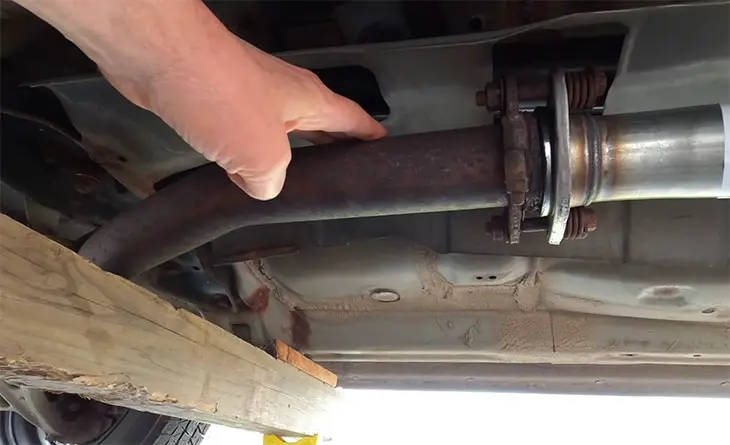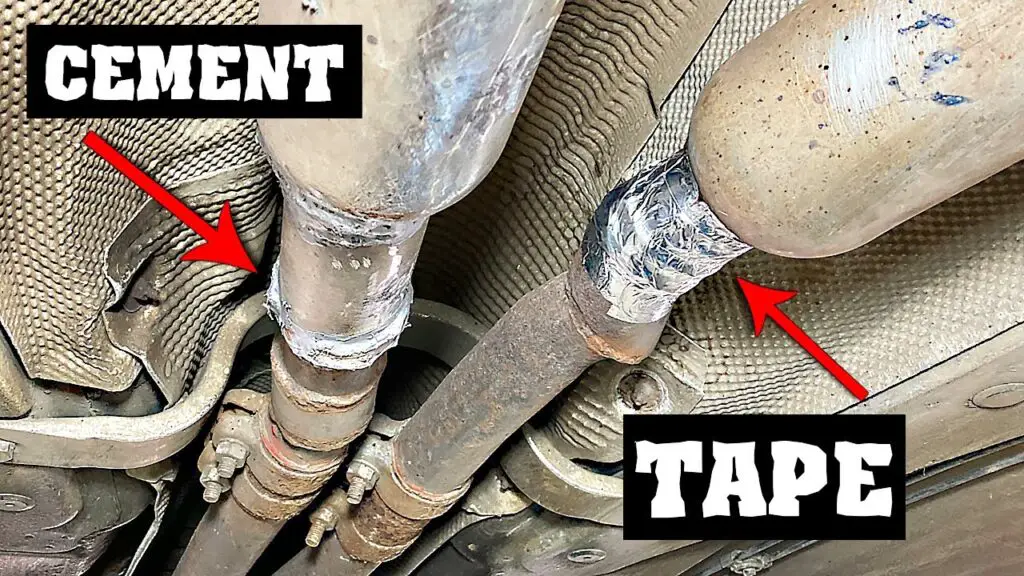Exhaust pipe leak repair fixes cracks or holes in the exhaust system to stop noise, improve performance, and prevent toxic fumes. Small leaks can be sealed with tape or putty, while larger ones may need pipe replacement.
Vehicle’s exhaust system isn’t just a bunch of pipes underneath—it plays a vital role in noise reduction, emissions control, and engine performance. When an exhaust pipe leaks, it can lead to several issues including performance drops, increased emissions, and even health hazards.
Knowing how to identify and repair an exhaust leak can save you money and keep the vehicle running optimally.

Contents
What Is an Exhaust Leak?
An exhaust leak occurs when there’s a break, crack, or hole in the exhaust system allowing gases to escape before reaching the tailpipe. These leaks can occur anywhere from the exhaust manifold near the engine to the muffler at the rear.
Common Causes of Exhaust Pipe Leaks
An exhaust leak might sound like a minor issue, but it can lead to increased emissions, reduced fuel efficiency, and even engine performance problems. Understanding what causes these leaks can help prevent costly repairs down the road.
- Rust and Corrosion: Over time, road salt, water, and mud can eat away at the metal, especially in colder climates.
- Physical Damage: Hitting a pothole or road debris can puncture or crack the exhaust system.
- Aging Components: Clamps, gaskets, and joints degrade over time and may start to leak.
- Worn Flex Pipes: The flex pipe absorbs engine vibrations, and it can crack from age or movement.
- Poor Installation or Aftermarket Parts: Improperly fitted or low-quality components often lead to gaps and leaks.
Symptoms of an Exhaust Leak
Here are some common symptom of exhaust leak –
- Loud rumbling or hissing noise, especially during acceleration.
- Decreased fuel efficiency.
- Engine misfires or rough idling.
- Exhaust fumes smell inside the cabin (a serious safety hazard).
- Check Engine Light (CEL), particularly with oxygen sensor or catalytic converter codes.
- Reduced engine power or throttle response.
- Visible damage, such as soot marks, rust, or holes.
How to Detect an Exhaust Leak
Exhaust leaks aren’t just noisy—they can also be dangerous, allowing toxic fumes like carbon monoxide to enter your cabin and disrupting your vehicle’s performance. Detecting a leak early can save money and prevent health risks.
1. Visual Inspection
Raise your vehicle (use jack stands), and inspect the entire length of the exhaust system for rust, cracks, or holes.
2. Sound Test
Have someone start the car while you listen beneath (safely from a distance). Listen for hissing, ticking, or popping sounds.
3. Soapy Water Test
Spray a soapy water solution on suspicious areas while the car idles—if it bubbles, you’ve found the leak.
4. Smoke Test
Introduce smoke (via a smoke machine or fog) into the exhaust and check for visible leaks.
DIY Repair Methods for Exhaust Pipe Leaks
Fixing minor exhaust leaks yourself can save you time and money. While not every leak can be repaired at home (especially large cracks or major rust damage), many can be patched with simple tools and materials.
1. Exhaust Repair Tape (Temporary Fix)
When to Use: Small pinholes or hairline cracks.
Tools & Materials:
- Exhaust repair tape (like Thermo-Tec or Permatex)
- Wire brush
- Heat-resistant gloves
Steps:
- Clean the damaged area with a wire brush to remove rust.
- Let the pipe cool completely.
- Wrap the tape tightly around the leak area.
- Allow it to cure as per product instructions.
Pros: Cheap, easy, fast.
Cons: Only temporary, may not work for larger leaks or high-heat sections.

2. Exhaust Putty or Epoxy (Semi-Permanent Fix)
When to Use: Small to medium holes or cracks.
Materials:
- Exhaust putty (like J-B Weld ExtremeHeat)
- Sandpaper or wire brush
- Gloves and putty knife
Steps:
- Sand and clean the area.
- Apply putty generously over and around the crack/hole.
- Let it cure fully (usually 8+ hours).
Pros: More durable than tape.
Cons: Not ideal for flex joints or vibrating parts.
3. Exhaust Clamp and Patch Kit
When to Use: For sealing cracks or patching flanges/pipes.
What You Need:
- Exhaust patch or sleeve
- U-bolt clamp
- Wrenches
- Metal bandage or mesh
Steps:
- Slide the patch or sleeve over the damaged section.
- Tighten clamps evenly until secure.
- Check for leaks after the engine warms up.
Pros: Durable, affordable.
Cons: Not ideal if the area is heavily corroded.
4. Replace the Affected Section
When to Use: For heavily rusted or cracked pipes and flex sections.
Tools:
- Reciprocating saw or pipe cutter
- New exhaust section
- Exhaust clamps or welding gear
- Wrenches, jack stands
Steps:
- Cut out the damaged section.
- Fit the new piece in place.
- Use exhaust clamps or weld the section.
- Start the car and listen for leaks.
Pros: Long-lasting and professional.
Cons: Requires mechanical skill and tools.
When Should You See a Mechanic?
While DIY repairs are doable, call a professional if:
- The leak is at or near the exhaust manifold.
- You notice multiple leak points or severe corrosion.
- You’re failing emissions tests.
- There’s a strong smell of carbon monoxide inside the cabin.
- Welding is required but you lack the tools or skills.
Risks of Ignoring Exhaust Leaks
An exhaust leak might seem like a minor nuisance at first, but letting it go unresolved can lead to serious safety, performance, and financial consequences. Here’s what’s at stake:
- Health hazard: Carbon monoxide poisoning can occur if fumes enter the cabin.
- Poor engine performance: A leak can skew O2 sensor readings.
- Environmental damage: Your car emits more harmful pollutants.
- Failed inspection: You may not pass state emissions or safety checks.
- Component damage: Nearby parts like sensors or the catalytic converter can overheat or become damaged.
Frequently Asked Questions
Here are some FAQs on exhaust pipe peak repair –
Q1: Can I drive with an exhaust leak?
Yes, but it’s risky. Small leaks may not affect short trips, but large or manifold leaks can expose you to toxic gases or damage your engine.
Q2: How much does professional exhaust leak repair cost?
Repair costs range from $100 to $500, depending on severity, labor rates, and parts.
Q3: Will an exhaust leak trigger a check engine light?
Yes. Especially if the leak is near the oxygen sensors—it can confuse the engine’s air/fuel readings.
Q4: How long does exhaust tape last?
Usually a few weeks to months, depending on heat, moisture, and vibration exposure.
Q5: Can I use Flex Seal or duct tape on an exhaust pipe?
No. These are not heat-rated and can melt or catch fire. Always use materials rated for exhaust temperatures.
Final Thoughts
Exhaust pipe leaks are common but should never be ignored. However you’re a seasoned DIYer or just learning, knowledge about how to identify, assess, and repair these leaks can save you hundreds of dollars and help avoid serious safety issues. While some fixes are simple and temporary, serious or high-heat leaks should always be handled professionally.